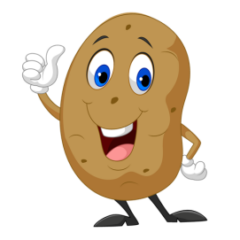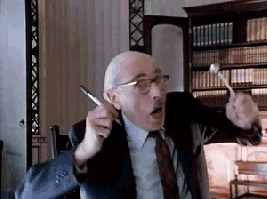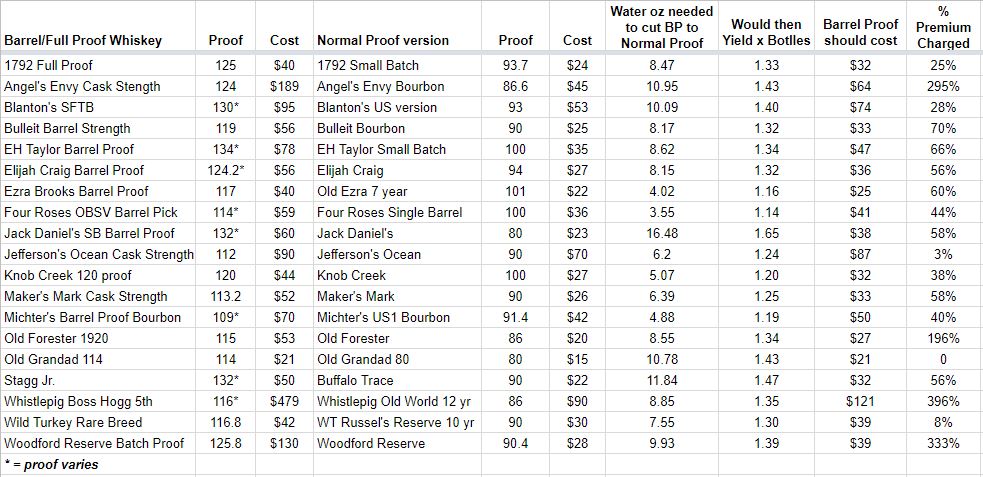As part of my drinking for science projects, I decided to test if I could recreate a bourbon that was finished in a secondary barrel by just adding a small portion of that finish directly to a bottle. I will start by saying these products are NOT bourbon. We all know by federal code bourbon can’t have added colors or flavoring. Placing a bourbon in a secondary barrel that previously held another type of product adds both color and flavoring. Bourbon by code is class type 101 for straight bourbon or 141 for bourbon. Finished American whiskies by federal code become class type 641 – whiskey specialties. The catch is the TTB allows producers to state Bourbon on the front label if they also state what was done to it. So ‘KY Straight Bourbon with added yellow food coloring’ could appear on a label.
My theory is I can replicate, or even surpass, these whiskies by just adding small amounts of the secondary product directly to a bottle and allowing it to marry for at least 30 days. In many cask finished bourbons the secondary cask finishing times are often very short. Also, producers have been known to recharge their secondary barrels – after emptying they add some additional port/sherry/etc. back to the barrel before refilling with bourbon.
For the test, I made 3 ‘finished bourbons’ employing my method starting with standard available bourbons. I added my secondary finishing directly to the bottle and let this marry in the bottle for 30 days. I have learned from previous testing that allowing time for flavors to meld together is an important step in the process. I purchased 3 well known secondary cask finished bourbons. I also limited my costs to around half the retail cost of their commercial counterparts. I had a group of 11 testers blind taste and score each whiskey.
In the past for scoring I employed a 100-point scale. The issue with a 100-point scale is 0-60 is not used. After discussing scoring systems with a NASA scientist friend I decided on a 5-point scale. This time, and going forward, I will be using this 5-point scale:
- 1 – off putting with flawed notes
- 2 – meh – would work good as a mixer
- 3 – sipping whiskey – good everyday pour
- 4 – Good whiskey, above average with little to no flaws
- 5 – OMG, my mouth is having multiple orgasms – the best of the best
I debated how much to add on percentage basis to each bottle. How wet are the barrels when producers add whiskey to them? I came across an interview on the K&L blog with Alexandre Gabriel of Maison Ferrand in which he said “Back to the Port barrel analogy, we have done tests and found that when you empty a barrel there is still roughly 3.5% of the previous liquid in the barrel. If it’s a wet barrel, then you’re now up to 5%.” Of note, the TTB says if over 2.5% of wine flavoring is added, then the product must be stated as Flavored Whisky with the type of wine listed. This makes me wonder if some of the commercial products really should be labeled something like Port Flavored Whisky. Perhaps producers elect to use secondary barrels to finish rather than add directly to the bourbon barrel to avoid the requirement of calling the final product a flavored whiskey. I elected to keep my additions under 3%, which is a very small amount per bottle and calculated out to 0.75 oz per bottle. I’ll list my exact recipes at the end of the article.
The test was in 3 rounds. Each round the testers tried 2 whiskies side by side; my version and the commercial version. The testers did not know the whiskies selected or the finishes.
Round 1 For the first ‘finished bourbon’, I selected Angel’s Envy, which was the first widespread release of a bourbon finished in a port wine barrel. For my version I used a base of Old Grand-Dad 114 proof, some water to reduce proof, and Tawny port. The cost of my version was $21.50 whereas the cost of the Angel’s Envy is $47 in my market. While they don’t disclose who they source the base bourbon used in Angel’s Envy, it has always been KY Straight Bourbon. They do have their own distillery, but as of now their own distilled bourbon is still aging. I saw Wes Henderson from Angel’s Envy recently and he mentioned they had sourced KY bourbon from 12 different KY distilleries. So who knows, there might be some Beam distilled high rye bourbon in the mix. The result of the tasting panel:
My bourbon with port added scored 3.04
Angel’s Envy Port finish scored 3.14
The result was close, but Angel’s Envy won this round. 5 testers scored the AE higher, 4 testers scored my version higher, and 2 had it as a tie.
Round 2 For the second ‘finished bourbon’, I elected to go with a brandy finish. I selected Belle Meade Bourbon finished in a Cognac Cask. For my version, I started with Wild Turkey Rare Breed, some water to reduce proof, and Armagnac. My version cost $41 whereas the Belle Meade was $75.
My bourbon with Armagnac added scored 3.0
Belle Meade Bourbon Cognac Cask Finish scored 2.59
The testers clearly favored my version. 8 selected my version as better, 2 preferred the Belle Meade, and 1 had it as a tie.
Round 3 For the third ‘finished bourbon’, I went with an Orange Curacao finish. The commercial whiskey was Parker’s Heritage Collection 12th Edition. For my version I used Elijah Craig bourbon including both the standard and the barrel proof versions to match the 110 proof of the PHC 12. I added Pierre Ferrand Dry Orange Curaçao to the bottle. My version cost $43.50 whereas the PHC cost was $90.
My bourbon with Orange Curaçao added scored 3.14
PHC 12 Bourbon finished in orange curaçao barrels scored 1.85
This was not even close. 10 of the testers scored my version higher and 1 had it as a tie.
My conclusion is if you are a fan of ‘finished bourbons’ you should definitely try making some at home. I have open bottles of all 3 of my ‘finishes’, where as you might have to purchase a bottle. A bottle of ‘finish’ will go a long way as I used only 0.75 oz each time. Below are my exact recipes used, but I would encourage others to play around with their own versions. Be sure to let the blend marry for at least 2 weeks or preferably 30 days.
My bourbon with port added:
- OGD 114 – 23.5 oz
- Reverse Osmosis water – 2 oz
- Kopke 10-year Tawny port – 0.75 oz
My bourbon with Armagnac added:
- WT Rare Breed – 21 oz
- Reverse Osmosis water – 4 oz
- L’Encantada 13-year-old Armagnac – 0.75 oz
My bourbon with orange curaçao added:
- Elijah Craig standard – 15 oz
- Elijah Craig barrel proof – 10 oz
- Pierre Ferrand Dry Orange Curaçao – 0.75 oz



